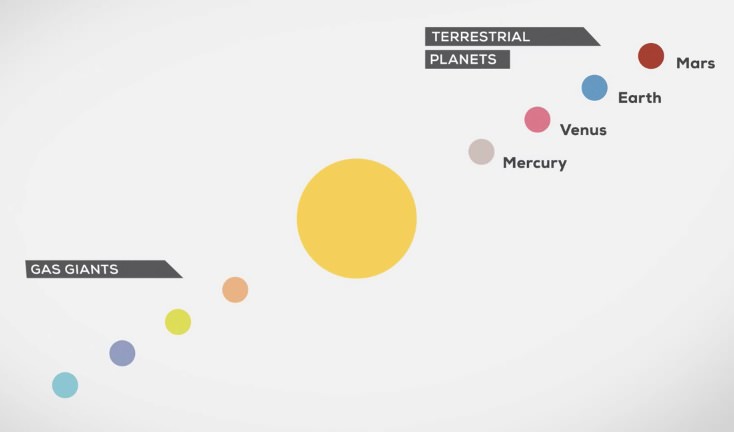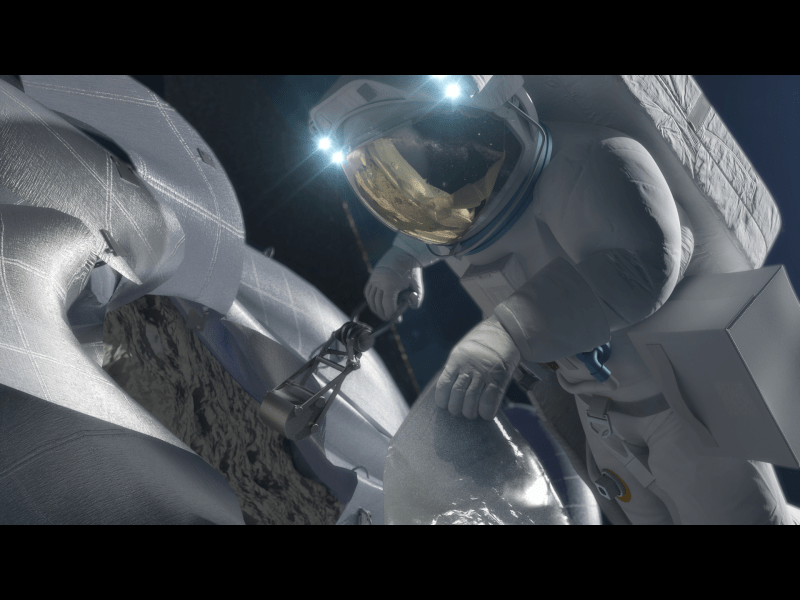Apollo 11 moonwalker Neil Armstrong died on Aug. 25, 2012 at age 82, and NASA has posted a video tribute with an original song “Tranquility Base” by songwriter Eric Brace. Fittingly, the video starts with a 1960’s era television set showing the first Moon landing… were you watching on a TV like that on July 20, 1969 when Neil took those first steps on the Moon?
The song begins:
“Tell me Neil, what you were thinking
With all of us watching you on the TV
Taking small steps and giant leaps and planting the flag
In a place no one had been.”
Your Guide To When, Where and How To See The Aurora Borealis

As an amateur astronomer, two of the most frequently questions I’m asked are “When is the best time to see the aurora borealis and where is the best place?” In terms of place, two locations comes to mind: Churchill, Manitoba and Tromso, Norway. But until such time as the transporter is invented, most of us will be staying closer to home. The simple answer is north and the farther north the better.
As for the time, in the northern border states of the US, auroras occur fairly regularly around the time of solar maximum, when the sun peaks in storm activity. The current solar cycle tops out this summer and fall, so your chances at seeing northern lights are far better now than a year and a half ago when solar activity saw a steep decline during a protracted minimum.
Continue reading “Your Guide To When, Where and How To See The Aurora Borealis”
Astrophoto: Double Rainbow All the Way Across the Observatory
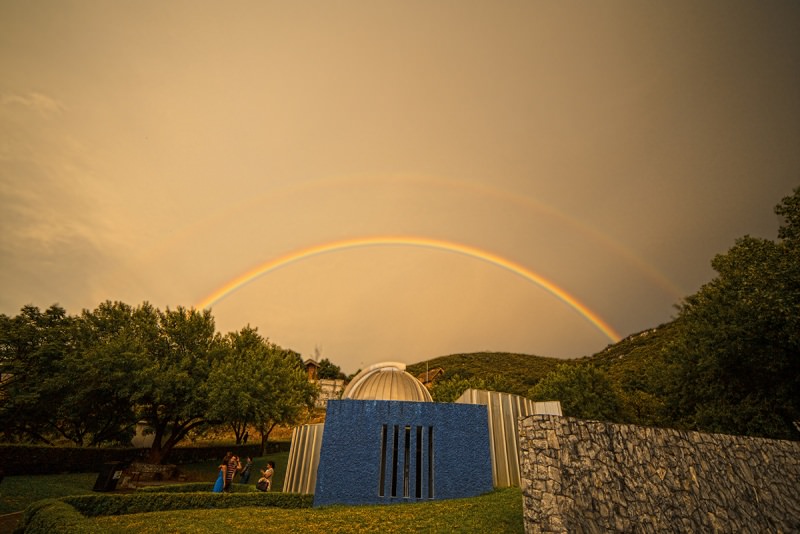
Astrophotographer César Cantú was in the right place at the right time this weekend! He took this beautiful photo of a double rainbow all the way across the sky — and directly over the Planetario Alfa observatory in Mexico, part of the Alfa Planetarium Science and Technology Museum, near San Pedro Garci’a, in the northeast part of Mexico.
Of course, this is reminiscent of the most famous double rainbow…at least on You Tube:
Update: It must be double rainbow season. Astrophotographer Göran Strand from Sweden took the image below on August 19,2013:

Want to get your astrophoto featured on Universe Today? Join our Flickr group or send us your images by email (this means you’re giving us permission to post them). Please explain what’s in the picture, when you took it, the equipment you used, etc.
Weekly Space Hangout – Aug. 23, 2013: Mars One, Zombie WISE, Luca Parmitano, Wave at Saturn
It’s time for the Weekly Space Hangout. This is our weekly rundown on all the big space news stories of the week, explained by a dedicated team of space journalists.
Host:Fraser Cain
Panel: Alan Boyle, Brian Koberlein, Jason Major, Nicole Gugliucci
Mars One Reaches 165,000 Entries
WISE Returns from the Dead
Luca Parmitano’s Chilling First-Hand Account of His Mishap in Space
Baby Stars Belch in their Mama’s Face
Mars, Not as Big as the Moon
Earth Waves At Saturn
Exoplanet with a Short Year
We broadcast the Weekly Space Hangout every Friday afternoon as a live Google+ Hangout. You can join us live on Google+, YouTube or right here on Universe Today every Friday at 12:00 pm Pacific / 3:00 pm Eastern.
How Did Life Begin?
No answers today, only a question. But it’s one of the most interesting and meaningful questions we can possibly ask.
Where does life come from?
How did we get from no life on Earth, to the rich abundance we see today?
Charles Darwin first published our modern theories of evolution – that all life on Earth is related; adapting and changing over time. Look at any two creatures on Earth and you can trace them back to a common ancestor. Humans and chimpanzees share a common ancestor from at least 7 million years ago.
Trace back far enough, and you’re related to the first mammal who lived 220 million years ago. In fact, you and bacteria can trace a family member who lived billions of years ago. Keep going back, and you reach the oldest evidence of life on Earth, about 3.9 billion years ago.
But that’s as far as evolution can take us.
The Earth has been around for 4.5 billion years, and those early years were completely hostile to life. The early atmosphere was toxic, and a constant asteroid bombardment churned the landscape into a worldwide ocean of molten rock.
As soon as the environment settled down to be relatively habitable, life appeared. Just half a billion years beyond the formation of the Earth.
So how did life make the jump from raw chemicals to the evolutionary process we see today? The term for this mystery is abiogenesis and scientists are working on several theories to explain it.
 One of the first clues is amino acids, the building blocks of life. In 1953, Stanley Miller and Harold Urey demonstrated that amino acids could form naturally in the environment of the early Earth. They replicated the atmosphere and chemicals present, and then used electric sparks to simulate lightning strikes.
One of the first clues is amino acids, the building blocks of life. In 1953, Stanley Miller and Harold Urey demonstrated that amino acids could form naturally in the environment of the early Earth. They replicated the atmosphere and chemicals present, and then used electric sparks to simulate lightning strikes.
Amazingly, they found a variety of amino acids in the resulting primordial soup.
Other scientists replicated the experiment, even changing the atmospheric conditions to match other models of the early Earth. Instead of water, methane, ammonia and hydrogen, they wondered what would happen if the atmosphere contained hydrogen sulfide and sulfur dioxide from volcanic eruptions. Environments around volcanic vents at the bottom of the ocean might have been the perfect places to get life started, introducing heavier metals like iron and zinc. Perhaps ultraviolet rays from the younger, more volatile Sun, or abundant radiation from natural uranium deposits played a role in pushing life forward into an evolutionary process.
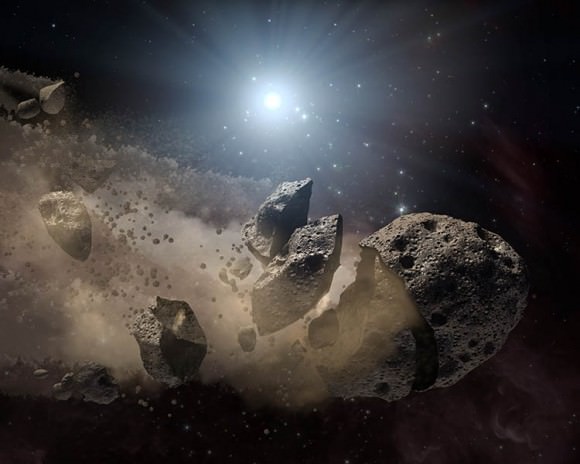
Maybe it wasn’t the organic chemicals that came first, but the process of self organization. There are examples of inorganic chemicals and metals that can organize themselves under the right conditions. The process of metabolism came first, and then organic chemicals adopted this process.

So how did life get here? We just don’t know.
Maybe we’ll discover life on other worlds and that will give us a clue, or maybe scientists will create an experiment that finally replicates the jump from non-life to life.
We may never discover the answer.
An Illustrative Explanation Of Our Solar System
The Solar System: it’s our home in space, the neighborhood that we all grew up in and where — unless we figure out a way to get somewhere else — all of our kids and grandkids and great-great-great-great-times-infinity-great-grandkids will grow up too. That is, of course, until the Sun swells up and roasts Earth and all the other inner planets to a dry crunchy crisp before going into a multi-billion year retirement as a white dwarf.
But until then it’s a pretty nice place to call home, if I may say so myself.
Edu-film designer Philipp Dettmer and his team have put together a wonderful little animation explaining the basic structure of the Solar System using bright, colorful graphics and simple shapes to illustrate the key points of our cosmic neighborhood. It won’t teach you everything you’ll ever need to know about the planets and it’s not advisable to use it as a navigation guide, but it is fun to watch and well-constructed, with nice animation by Stephan Rether and narration by Steve Taylor.
Check out the full video below:
“Through information design, concepts can be made easy and accessible when presented in a short, understandable edu-film or perhaps an infographic. Whether explaining the vastness of the universe or the tiniest building blocks of life – all information can be presented in a way that everyone understands. Regardless of prior knowledge.”
– Philipp Dettmer
(And come on, admit it… you learned something new from this!)
Credit: Philipp Dettmer Information Design. HT to Colin Lecher at Salon.
Major Volcanic Eruption Seen on Jupiter’s Moon Io

Recent observations of Jupiter’s moon Io has revealed a massive volcanic eruption taking place 628,300,000 km (390,400,000 miles) from Earth. Io, the innermost of the four largest moons around Jupiter, is the most volcanically active object in the Solar System with about 240 active regions. But this new one definitely caught the eye of Dr. Imke de Pater, Professor of Astronomy and of Earth and Planetary Science at the University of California in Berkeley. She was using the Keck II telescope on Mauna Kea in Hawaii on August 15, 2013 when it immediately became apparent something big was happening at Io.
“When you are right at the telescope and see the data, this is something you can see immediately, especially with a big eruption like that,” de Pater told Universe Today via phone.
de Pater said this eruption is one of the top 10 most powerful eruptions that have been seen on this moon. “It is a very energetic eruption that covers over a 30 square kilometer area,” she said. “For Earth, that is big, and for Io it is very big too. It really is one of the biggest eruptions we have seen.”
She added the new volcano appears to have a large energy output. “We saw a big eruption in 2001, which was in the Surt region, which is well known as the biggest one anyone has ever seen,” she said. “For this one, the total energy is less but per square meter, it is bigger than the one in 2001, so it is very powerful.”
While Io’s eruptions can’t be seen directly from Earth,infrared cameras on the Keck telescope (looking between 1 and 5 microns) have been able to ascertain there are likely fountains of lava gushing from fissures in the Rarog Patera region of Io, aptly named for a Czech fire deity.
While many regions of Io are volcanically active, de Pater said she’s not been able to find any other previous activity that has been reported in the Rarog Patera area, which the team finds very interesting.
Ashley Davies of NASA’s Jet Propulsion Laboratory in Pasadena, California and a member of the observing team told Universe Today that Rarog Patera was identified as a small, relatively innocuous hot spot previously in Galileo PPR data and possibly from Earth, but at a level way, way below what was seen on August 15, and reported in New Scientist.
de Pater and other astronomers will be taking more data soon with Keck and perhaps more telescopes to try and find out more about this massive eruption.
“We never know about eruptions – they can last hours, days months or years, so we have no idea how long it will stay active,” she said, “but we are very excited about it.”
No data or imagery has been released on the new eruption yet since the team is still making their observations and will be writing a paper on this topic.
Scientists think a gravitational tug-of-war with Jupiter is one cause of Io’s intense vulcanism.
A New Look at NASA’s Asteroid Capture Plan
NASA has released some new photos and video animations outlining the concept of how their planned asteroid capture mission will work. The plan is to find, capture, redirect a near-Earth asteroid to a stable point near the Moon in order to explore and study it. As we’ve said previously, it’s still unclear if NASA will receive Congressional funding or authorization to do an asteroid retrieval mission, but the agency is moving ahead with its planning work for now.
NASA recently did a mission formulation review to look at some internal studies on the mission, as well as taking a look at over 400 ideas the space community submitted concerning the mission.
The new images show crew operations including the Orion spacecraft’s trip to and rendezvous with the relocated asteroid, as well as astronauts maneuvering through a spacewalk to collect samples from the asteroid.
You can watch the video and see more images below.
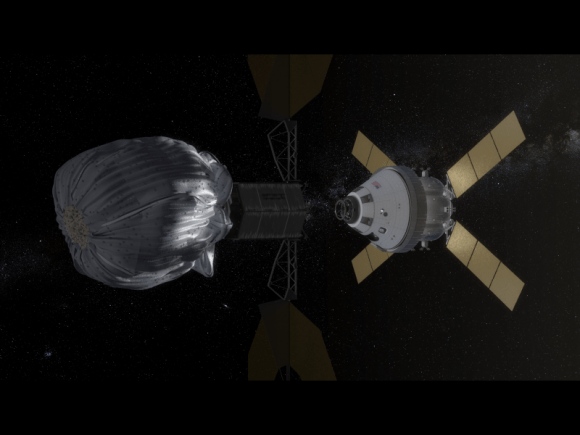
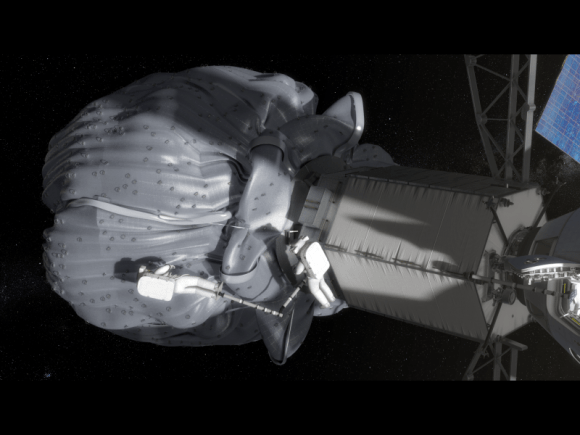
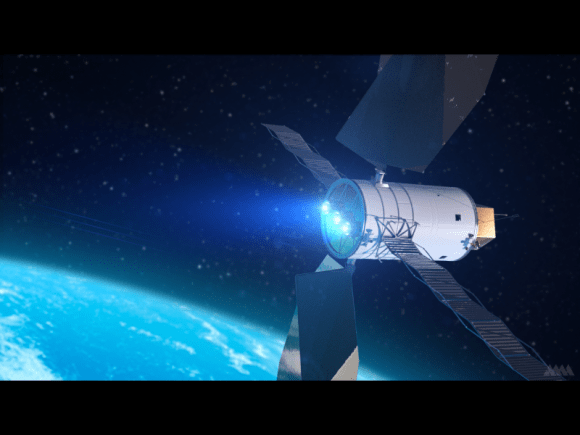
NASA is also looking at new technologies like a Solar Electric Propulsion System is an essential part of future missions into deep space with larger payloads. The use of advanced SEP offers more mission flexibility, NASA said.
If you’d like to get involved or add your input, NASA will host a technical workshop at the Lunar and Planetary Institute in Houston from Sept. 30 to Oct. 2 to discuss potential ideas. Virtual participation will be available to the public, and when the details of how to participate become available, Universe Today will post an update.
NASA’s LADEE Lunar Probe Set for Spectacular Science and September Night Launch – Visible to Millions and Millions
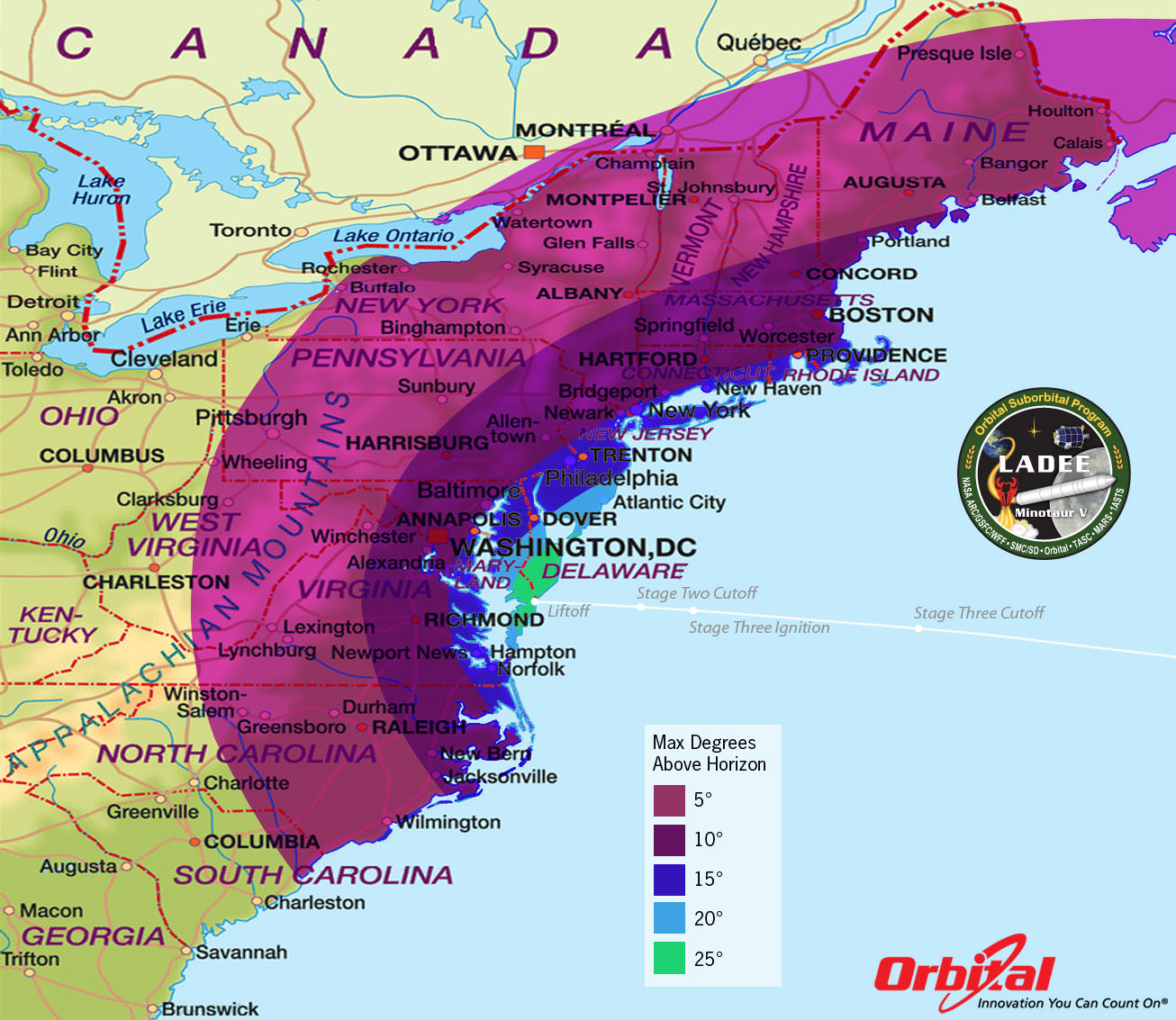
LADEE Minotaur V Launch – Maximum Elevation Map
The LADEE nighttime launch will be visible to millions of spectators across a wide area of the Eastern US -weather permitting. This map shows the maximum elevation (degrees above the horizon) that the Minotaur V rocket will reach during the Sep. 6, 2013 launch depending on your location along the US east coast. Credit: Orbital Sciences [/caption]
A spectacular nighttime blastoff blazing a historic trail to the Moon is set to soar in two weeks time when NASA’s LADEE spacecraft lifts off from the Eastern Shore of Virginia at NASA’s Wallops Flight Facility on Wallops Island – from America’s newest spaceport.
NASA’s Lunar Atmosphere and Dust Environment Explorer (LADEE) Observatory will thunder to space at 11:27 p.m. Friday, Sept. 6, from the commercial Mid-Atlantic Regional Spaceport (MARS) launch complex 0B at NASA’s Wallops Island facility atop the maiden flight of the new, solid fueled Minotaur V rocket developed by Orbital Sciences Corp.
LADEE’s late night launch will be absolutely spectacular and visible to tens of millions of spectators up and down the US East coast and interior areas stretching into the Midwest- weather permitting.
“I love this mission,” said John Grunsfeld, NASA Associate Administrator for Science at NASA Headquarters, at a media briefing today, Aug. 22.
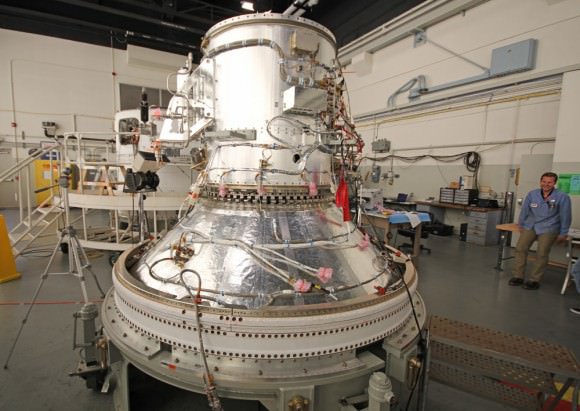
Close-up view of STAR 37 5th stage solid fuel motor for inaugural Minotaur V rocket launch at NASA Wallops rocket facility will propel LADEE into its lunar transfer orbit. LADEE will be mounted on top and surrounded by the payload fairing attached at bottom ring. Credit: Ken Kremer/kenkremer.com
“With NASA’s prior LRO and GRAIL spacecraft we studied the Moon’s surface and interior. Now with LADEE we study the atmosphere and dust,” said John Grunsfeld.
The purpose of LADEE is to collect data that will inform scientists in unprecedented detail about the ultra thin lunar atmosphere, environmental influences on lunar dust and conditions near the surface. In turn this will lead to a better understanding of other planetary bodies in our solar system and beyond.
The small car sized LADEE lunar orbiter mission will be historic in many ways. It’s the first probe of any kind ever launched to beyond Earth orbit from NASA Wallops, as well as being the first planetary science mission from Wallops.
It also marks the first launch of a five stage rocket and the first launch of a decommissioned Peacekeeper missile from Wallops.
The first three stages of the Minotaur V are based on the nuclear armed Peacekeeper ICBM intercontinental ballistic missile built during the Cold War – now retired and refurbished by Orbital for peaceful uses. Its literally beating sword into ploughshares.
The 5th stage is a new addition and what makes this Minotaur a new rocket class. The added thrust is precisely what enables shooting for the Moon.
Recently, I had an exclusive tour and photoshoot up close and personal with the upper stages of LADEE’s Minotaur V rocket at Wallops prior to integration at the commercial launch pad – 0B – and will be reporting on that here and in upcoming stories.
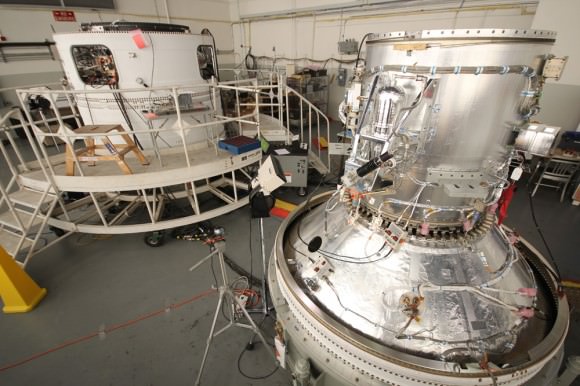
“LADEE is equipped with three science instruments to study the atmosphere and dust and a lunar laser technology demonstration,” said Joan Salute, LADEE program executive, NASA Headquarters.
These include an ultraviolet and visible light spectrometer that will gather detailed information about the composition of the tenuous lunar atmosphere; a neutral mass spectrometer to measure variations in the lunar atmosphere over time; a laser dust experiment that will collect and analyze dust particle samples; and a laser communications experiment that will test the use of lasers in place of radio waves for high speed dad communications with Earth.
“The lunar atmosphere is so thin that the molecules never collide,’ said Sarah Noble, LADEE program scientist, NASA Headquarters.
“It’s a ‘Surface Boundary Exosphere’ which is actually the most common type of atmosphere in our Solar System.”
Scientists also hope to solve a mystery dating back nearly five decades to the Apollo moon landing era, by determining if electrically charged lunar dust is responsible for the pre-sunrise horizon glow seen by the Apollo astronauts and also by the unmanned Surveyor 7 lander, according to Noble.
“This is the first NASA mission with a dedicated laser communications experiment,” said Don Cornwell, mission manager for the Lunar Laser Communications Demonstration, NASA’s Goddard Space Flight Center, Greenbelt, Md.
I asked when we could see laser communications implemented on future NASA spacecraft?
“A new laser communications system could possibly be used on the 2020 Mars rover from the surface of Mars,” Grunsfeld told Universe Today.
The couch sized 844 pound (383 kg) robotic explorer was assembled at NASA’s Ames Research Center, Moffett Field, Calif., and is a cooperative project with NASA Goddard Spaceflight Center in Maryland.
The spacecraft is a first of its kind vehicle built from a NASA Ames-developed Modular Common Spacecraft Bus architecture that can be applied to other missions. The mission cost is approximately $280 million.
The Minotaur V will boost LADEE into a highly elliptical orbit. Then over the next 23 days, as LADEE orbits Earth 3.5 times, the Moon’s gravitational field will increase the perigee of its orbit. The spacecraft will fire its on-board braking thrusters to achieve lunar orbit.
NASA Ames LADEE Mission – Lunar Orbital Insertion Animation
Video caption: This animation is a representation of lunar orbital insertion for LADEE, which is the path the spacecraft follows when it is captured by the Moon’s gravity and enters lunar orbit. Credit: NASA Ames/Dana Berry. Note: Animation is silent with no audio/music track included.
The mission will fly in a very low science orbit of about 50 kilometers altitude above the moon. The science mission duration is approximately 100 days.
“It’s limited by the amount of onboard fuel required to maintain orbit,” Doug Voss, launch manager, Wallops, told Universe Today.
“I’m excited about the night launch because people up and down the Atlantic seacoast will be able to see it,” Jim Green, Planetary Science Division Director at NASA HQ, told me.
And don’t forget that NASA has a 2nd really big launch from Wallops slated for Sep. 17 – with blastoff of the Orbital Sciences Antares rocket and Cygnus cargo carrier on their historic 1st mission to the International Space Station (ISS).
I’ll be on site at Wallops for both historic launches on Sep. 6 and 17 – reporting for Universe Today.
We’ll see you in Virginia!
…………….
Learn more about LADEE, Cygnus, Antares, MAVEN, Orion, Mars rovers and more at Ken’s upcoming presentations
Sep 5/6/16/17: “LADEE Lunar & Antares/Cygnus ISS Rocket Launches from Virginia”; Rodeway Inn, Chincoteague, VA, 8 PM
Oct 3: “Curiosity, MAVEN and the Search for Life on Mars – (3-D)”, STAR Astronomy Club, Brookdale Community College & Monmouth Museum, Lincroft, NJ, 8 PM
Oct 9: “LADEE Lunar & Antares/Cygnus ISS Rocket Launches from Virginia”; Princeton University, Amateur Astronomers Assoc of Princeton (AAAP), Princeton, NJ, 8 PM
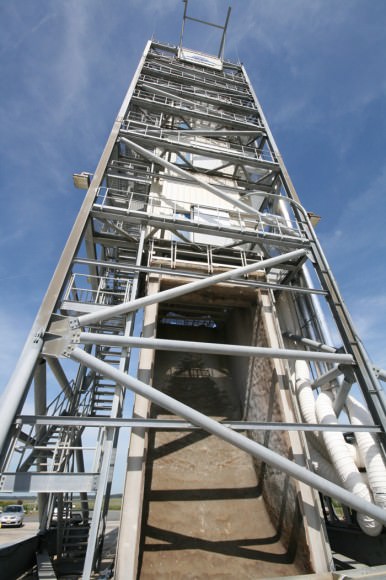
Amateur Astronomer Captures Incredible Movie of Looping Prominences on the Sun
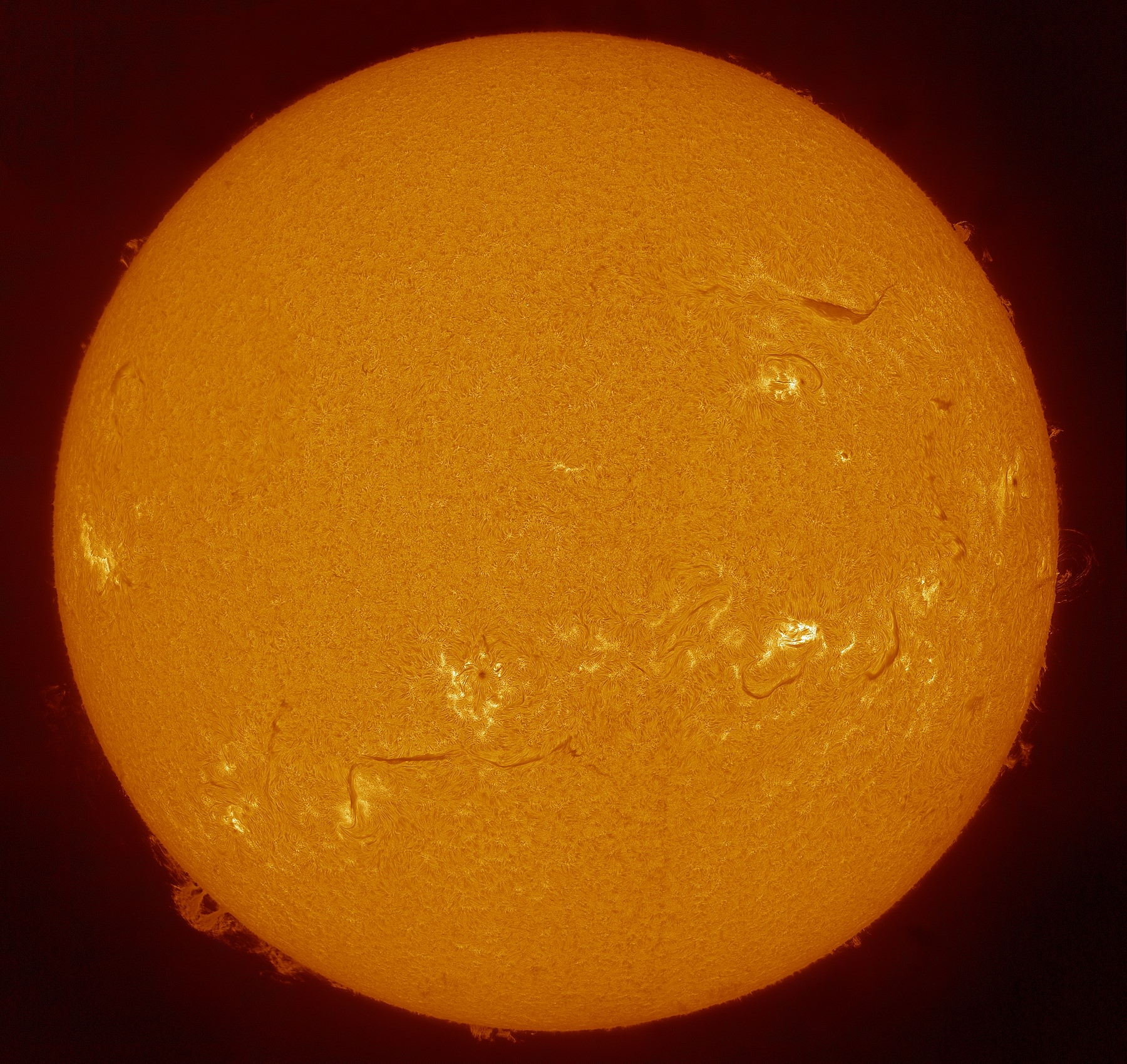
This close-up movie of looping, dancing prominences on the Sun looks like something you’d see from one of the spacecraft we have studying the Sun, such as the Solar Dynamics Observatory. However, the images were taken from Earth by amateur astronomer Michel Collart from France. He was able to capture incredible detail (see his list of equipment below) of this region on the Sun’s western limb, and in a series of 120 frames, shows a lot of activity taking place on the morning of August 20, 2013.
It is easy to become mesmerized watching the matter ejected at high speed from the surface, then falling back down due to the Sun’s gravity.
“We saw beautiful loops this morning, and as a bonus, we see a beautiful ejection of matter from the left and return to its starting point — great!” Collart posted on the WebAstro Forum.
And while these loops are huge – see the image below comparing the size of the Earth and Moon to the prominences — this is just a small area of the Sun.
See the full view of the Sun taken by Michel:
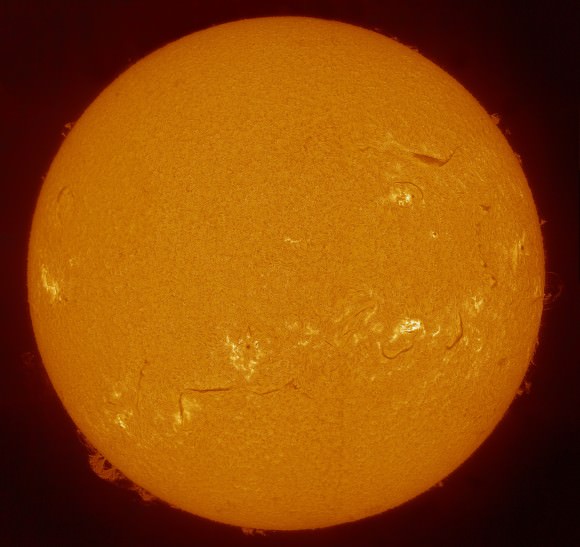
And the comparison of sizes between the loops, Earth, the Moon and the distance between the Earth and Moon:
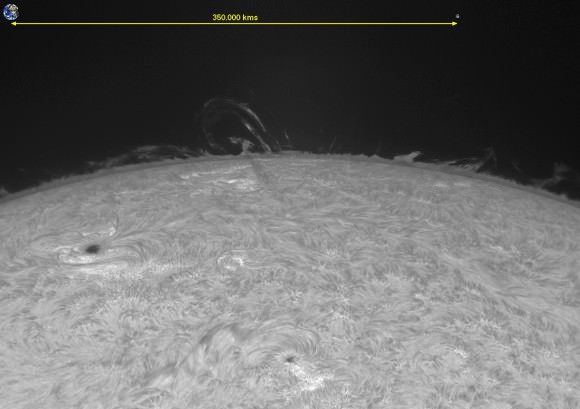
Michel told Universe Today that he’s been imaging the Sun for about 15 years and this is the first time he’s been able to take images of them. “These loops are very rare to catch,” he said.
The series of 120 frames (1 per 30 seconds, so 1 hour total) were taken by Michel on Tuesday August 20th, between 7:25 and 8:25 UTC on Tuesday, August 20, 2013, about the same time the Sun blasted a coronal mass ejection with billions of tons of solar particles toward Earth at the mind-boggling speed of 3.3 million km/h (2 million mph).
Here’s a video version of the loops, complete with music:
Michel Collart’s equipment and methods:
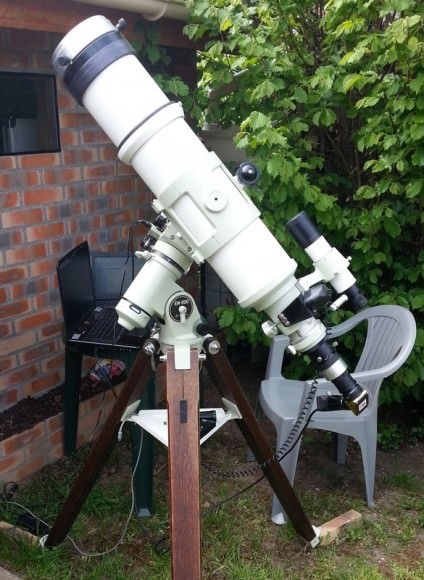
Takahashi Refractor TOA 130mm, Coronado Solarmax90 double stacked with Coronado PST etalon and blocking filter BF15, Televue 1.8x Barlow and Point Grey Camera Grasshopper3 ICX674 sensor.
120 videos of 10s spaced by 20s at 40 frames/s taken the 20/08/2013 between 7:25 and 8:25 GMT.
Processing: Autostakkert2 + Registax6 and export as video on Registax5, Finalizing the video in VirtualDub and export GIF
Thanks to Michel for allowing Universe Today to share his wonderful work!



